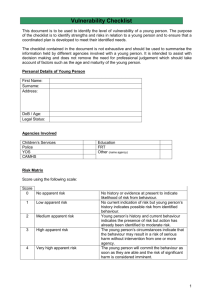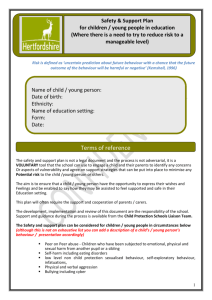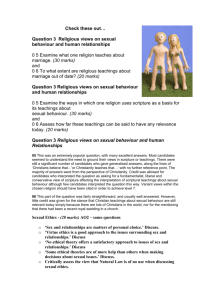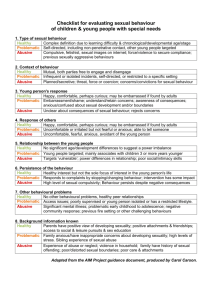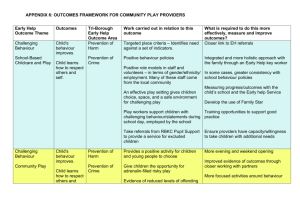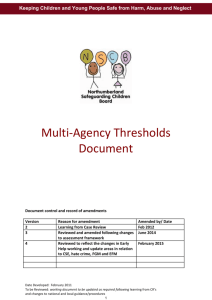Vulnerability and Protective Factors
advertisement
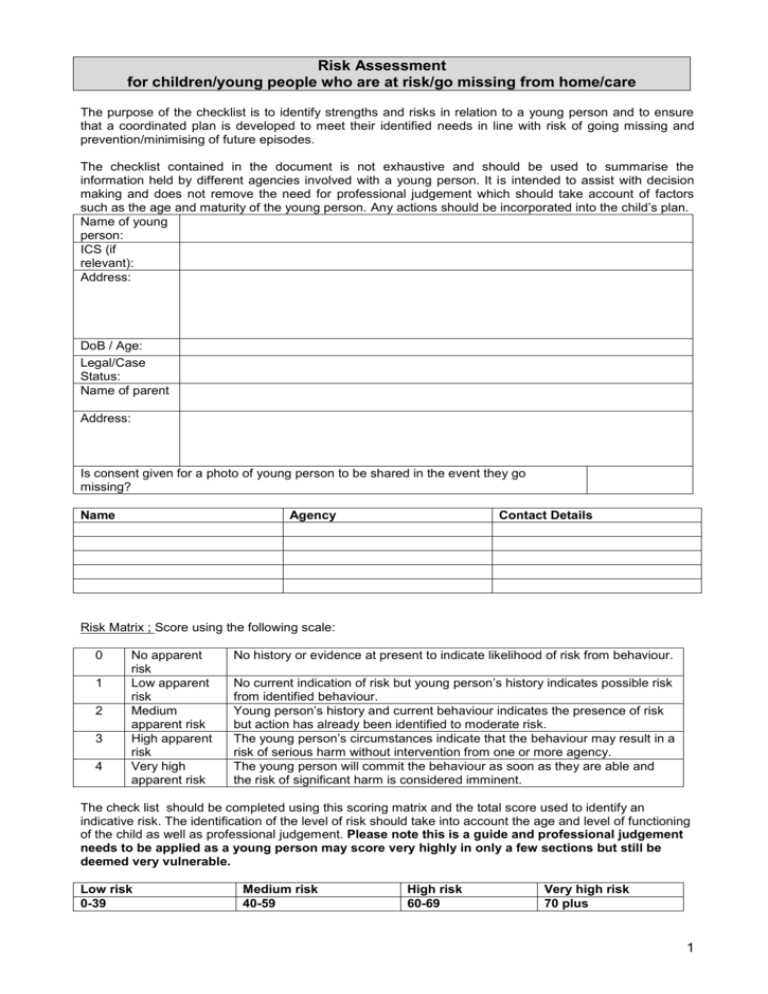
Risk Assessment for children/young people who are at risk/go missing from home/care The purpose of the checklist is to identify strengths and risks in relation to a young person and to ensure that a coordinated plan is developed to meet their identified needs in line with risk of going missing and prevention/minimising of future episodes. The checklist contained in the document is not exhaustive and should be used to summarise the information held by different agencies involved with a young person. It is intended to assist with decision making and does not remove the need for professional judgement which should take account of factors such as the age and maturity of the young person. Any actions should be incorporated into the child’s plan. Name of young person: ICS (if relevant): Address: DoB / Age: Legal/Case Status: Name of parent Address: Is consent given for a photo of young person to be shared in the event they go missing? Name Agency Contact Details Risk Matrix ; Score using the following scale: 0 1 2 3 4 No apparent risk Low apparent risk Medium apparent risk High apparent risk Very high apparent risk No history or evidence at present to indicate likelihood of risk from behaviour. No current indication of risk but young person’s history indicates possible risk from identified behaviour. Young person’s history and current behaviour indicates the presence of risk but action has already been identified to moderate risk. The young person’s circumstances indicate that the behaviour may result in a risk of serious harm without intervention from one or more agency. The young person will commit the behaviour as soon as they are able and the risk of significant harm is considered imminent. The check list should be completed using this scoring matrix and the total score used to identify an indicative risk. The identification of the level of risk should take into account the age and level of functioning of the child as well as professional judgement. Please note this is a guide and professional judgement needs to be applied as a young person may score very highly in only a few sections but still be deemed very vulnerable. Low risk 0-39 Medium risk 40-59 High risk 60-69 Very high risk 70 plus 1 Vulnerability and Protective Factors AREA OF POTENTIAL VULNERABILITY/RISK EMOTIONAL HEALTH Low Self Esteem Low Mood Depression Self Harm Severe Paranoia / Anxiety Suicidal Intent Suicidal Ideation Diagnosed Mental Health Difficulties, i.e., ADHD psychosis, OCD, schizophrenic Eating Disorder Other (state) PHYSICAL HEALTH Major (under consultant care) (3) Moderate (regular GP involvement) (2) Minor (self-managed or with support of carer) (1) No Physical Health Issues (0) SEXUAL HEALTH Early onset of sexual activity Having sex with multiple partners Early onset of sexual activity Having sex with multiple partners Engages in unsafe sexual behaviours which could result in contracting a sexually transmitted infection Has much older partner Wants to become pregnant/is a young parent History of abuse Inappropriate use of pornography/social networks SUBSTANCE MISUSE Alcohol Amphetamine Cannabis Cocaine/Crack Heroin Ecstasy Benzodiazepines Solvents/Gas/Aerosols Other (state) Poly Drug Use Frequency - Regular - Occasional Injecting - No - Yes/Previously Contact with Substance Users - No using friends - Some using friends - All friends using Family Substance Users - No family users - Known close family users - Significant family misuse Risk of Overdose RISK RATING EVIDENCE 2 SOCIAL/ENVIRONMENTAL Looked After Child / Leaving Care Family/Relationship Difficulties Non School Attendance Homelessness Unsuitable Housing Social Isolation Offending Behaviour Involvement in Criminal Justice System Risk of Custody Absconding (reported missing to Police) Frequency of Absconding Is the young person alone or with others? Is the young person running to, or away from? Risk of Harm Risk of Sexual Exploitation Length of Abscond Episodes TOTAL SCORE Known associates RISK LEVEL Possible addresses Protective Factors (To include what is working well for the young person.) 3 Young person’s view of risk: What do you think needs to happen to make people less worried about you? What would the next steps be to help with this? On a scale of 1 to 10, where 10 means the problem is sorted as much as it can be and 1 means things are so bad that there needs to be some professional help, where does the young person rate their situation at this time? 1 2 3 4 5 6 7 8 9 10 Parent or carers view of risk : What do you think needs to happen to make people less worried? What would the next steps be to help with this? On a scale of 1 to 10, where 10 means the problem is sorted as much as it can be and 1 means things are so bad that there needs to be some professional help, where does the parents / carer rate the situation at this time? 1 2 3 4 5 6 7 8 9 10 PROFFESIONAL ASSESSMENT OF RISK Please remember to note: What is it that you are worried about? What is working well? (include strengths, exceptions, resources, goals, willingness, etc) What needs to happen to decrease risk and improve safety. On a scale of 1 to 10, where 10 means the problem is sorted as much as it can be and 1 means things are so bad that there needs to be some professional help, where do the agencies involved rate the situation at this time? 1 2 3 4 5 6 7 8 9 10 4 Risk Management Plan Risk Management Plan needs to identify plans to keep the young person safe and must include the frequency of visits from professionals involved. It should consider what needs to happen, why this needs to happen, i.e., what the outcome will be for the young person and who is responsible for ensuring it happens. Please include preventative measures as well as reactive. This should where appropriate be added to the child’s plan. Reason for Action Required Action Who will do this and when? Completed by Date Countersigned (Manager) Date To be shared with : DATE FOR REVIEW: 5
